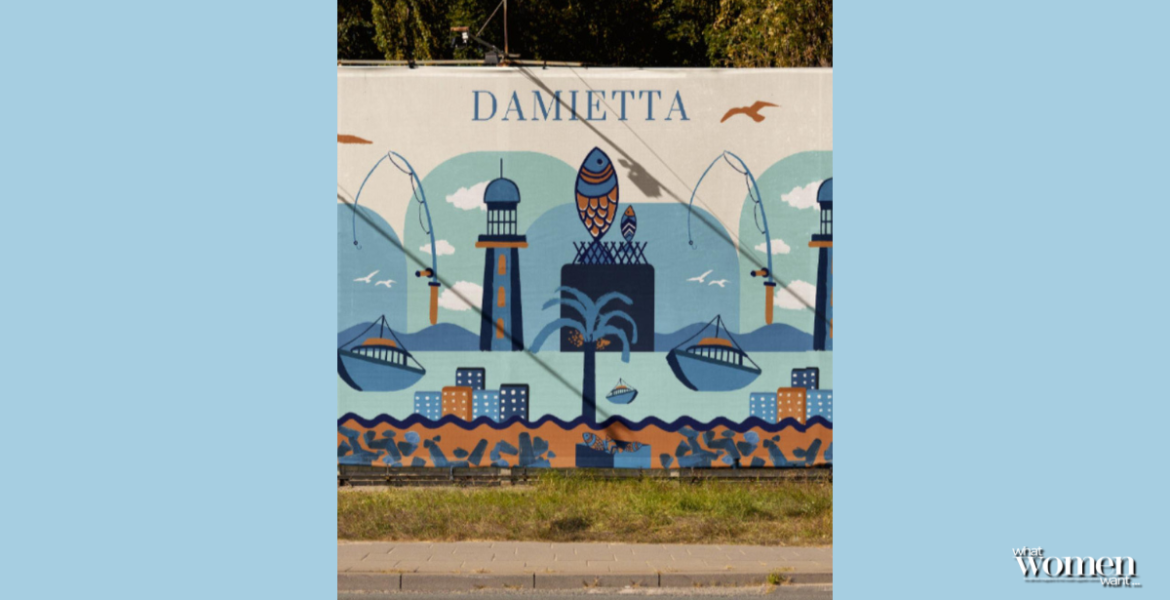Doodle Factory’s latest collaboration took them on a trip to Damietta. A place that refugee children from Syria and Sudan have been calling home for the past two years. There, they carried out an art session with them. They wanted to create a design that speaks to the city through the eyes of the children.
The workshop was part of the Urban Planning and Infrastructure in Migration Contexts Programme (UPIMC) funded by SECO and implemented by UN-Habitat in partnership with the Ministry of Local Development and Damietta Governorate.
Art Session
To break the ice, they started the session by asking the children to draw something simple. “In all our art sessions, most of the kids say this is the first time for them to hold a paintbrush. At first, there’s this feeling of, no, no, I can’t draw. No, no, I don’t want to paint. So, we have like a 10-minute warm-up where they draw anything,” explained Yasmeen Khamis, the co-founder.
During the warm up, they tried to defuse the tension by opening a dialogue with the children about what they are drawing. “Through the question of, what’s your favorite food, we ask them how do you cook it? When do you cook it? So, they start engaging with us in the conversation and laughing,” said Yasmeen.
Afterwards, they moved on to the main activity, where the children were asked questions like What is Damietta to you? What does it represent for you? Can you draw your favorite thing about it.
Design Process
Using the children’s art, Doodle Factory created two designs that represent Damietta through its distinctive features like the buildings, the Lighthouse, palm trees, seaside rocks, the boats and the fish. Choosing which elements to incorporate though was no easy feat.
They started by researching the city’s most significant elements. Then, they went onto research how the city has been portrayed before. “We went from Damietta to Ras Al Bar. So, as a team, we were capturing things that are very iconic about both,” pointed out Yasmeen. The final step was combining it all together: the research, elements from the children’s drawings and their design direction to capture the city in a childlike but representative way.
Design Outcome
The designs were then used to create different items. The first is a simple visual identity for public space elements such as lamppost banners, street banners, postage stamps and museum tickets. “UN-Habitat is going to present them to the governorate itself and propose them as part of the city’s branding,” said Yasmeen.
As for the second item, it is merchandise such as bucket hats and tote bags. “The merchandise is designed but it’s still not produced. Ideally, it would be produced and sold. When it’s sold, we give 10% of the revenue back to the children to fund something that has to do with their education or health,” explained Yasmeen.
For years, Doodle Factory has been able to use art sessions for children to leave a lasting impact on them. They get a day of play and fun and receive funds that give them access to basic needs.

